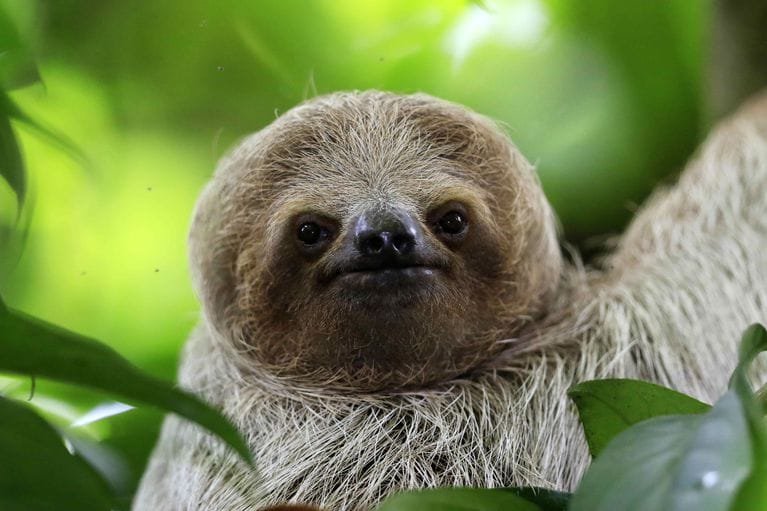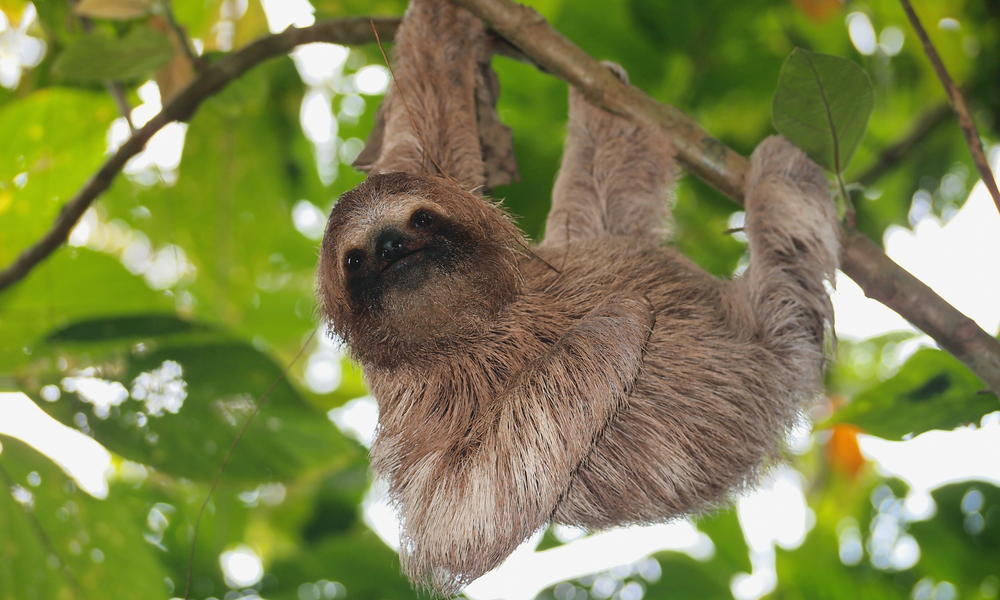A Sloth Treats A Sloth
Sloth Party Dessert Plates feature a topsy turvy teal sloth hanging upside down from a branch. The striped pink background and fun flower and triangle accents add a pop of excitement to any jungle-themed tablescape. Have the plates hang out on a buffet table or serve up sweet treats directly on them to keep party animals fueled for fun. Fact: Sloth can dance and so can Derek Hough.The World of Dance and Dancing With the Stars judge was born to be on this kind of show.Plus, Derek revealed to Entertainment Tonight this fall that he. Unique Halloween Sloth Stickers designed and sold by artists. Decorate your laptops, water bottles, helmets, and cars. Get up to 50% off. White or transparent. Merry Sloth-mas! These are the perfect Christmas treat for any massive sloth lover! Add their name and a little message to complete these cuties! Customer reviews. The pygmy sloth is half the size of the sloth that most of us are familiar with — and twice as cute Pygmy sloths are a great example of what’s known in zoology as “the island rule.” This natural law predicts that animal populations isolated on islands have a tendency to either get bigger (if the threat of predators is removed).
Bears are a curious subject. On the one hand, they look adorable, but on the other hand, they are capable of such destruction that approaching a real live bear is almost never wise.
In Sri Lanka, as well as around the world, despite looking cuddly in photos, bears are very cautiously approached in real life. The chances of surviving being mauled by a bear are slim, and even if you do survive, you could end up blinded, disfigured, or losing a limb or two. Despite this, when looking at human-bear conflict, it is most often the bears who end up dying.
Sri Lanka has its own endemic subspecies of the sloth bear. The Sri Lankan sloth bear is small-sized and is fairly specialised, with long steel-like claws they use to break the termite mounds, their jaws don’t have incisors, and their snouts enable them to suck ants of these termite mounds easily.
A Sloth
The International Union for Conservation of Nature (IUCN), the global authority on the status of the natural world and the measures needed to safeguard it, deemed the sloth bear to be a vulnerable species in 2004. Despite this, research suggests that sloth bear populations are still declining.
So what is happening with these mysterious creatures? Why are they declining and what can we do about it?
The Sri Lankan sloth bear
There have been confrontations and deadly fights recorded between sloth bears, but mainly they avoid physical conflict. Leopards especially avoid conflict because they need to hunt to survive and can’t afford to get injured.” Naturalist and Environmental Foundation Ltd. (EFL) Director Rukshan Jayawardene
The sloth bear is a South Asian bear that can easily be confused with other bears despite its smaller size, especially in India which has three species of bear – the Asiatic black bear, the sloth bear, and the sun bear. The sloth bear is also found in Bangladesh (though they are possibly extinct there), Bhutan, India, Nepal, and Sri Lanka.
Though not endangered, the sloth bear is a vulnerable creature, which means that care needs to be taken in conserving populations. Omnivorous, sloth bears do not actively hunt, preferring to scavenge, and sometimes taking over kills from leopards, especially female leopards.
Naturalist and Environmental Foundation Ltd. (EFL) Director Rukshan Jayawardene shared that leopards and sloth bears have somewhat of a messy co-existence.
“There have been confrontations and deadly fights recorded between sloth bears,” Jayawardene said, adding: “But mainly they avoid physical conflict. Leopards especially avoid conflict because they need to hunt to survive and can’t afford to get injured.”
The threats faced by sloth bears
From a natural standpoint, the Sri Lankan sloth bear doesn’t have any major threats. “In Sri Lanka, the sloth bear has no enemies, “Jayawardene said. “The leopard is an enemy but it isn’t hunted. There is no record of young bears and cubs having been killed, though I feel it must be happening and we just don’t know about it. I’ve seen an unusual amount of interest from leopards in young bears. Predators like the leopard automatically react to small mammals like that. Although, in the case of sloth bears, they’re inseparable from their mothers for the first few months of life, so danger from leopards is relatively low because they’re under their mother’s protection,” explained Jayawardene.
The IUCN lists the main threats to sloth bears as habitat loss and poaching. In a Sri Lankan context, poaching is not a major threat to the sloth bear. Biodiversity Education and Research (BEAR) Founder and Principal Scientist Ranil P. Nanayakkara explained that habitat destruction and deforestation are the biggest threats the Sri Lankan sloth bear faces. “They are a species that prefers monsoon thick forest. They’re termite eaters and ant-eaters, food that is highly forested habitats. Habitat destruction is a major threat they face on a global scale.”
From a human perspective, Nanayakkara explained that the threat of people is there to a certain extent when people go into the forest to collect bee honey and firewood. “It’s not that common in Sri Lanka where people get mauled by sloth bears,” he said, adding: “It has a very keen sense of smell but comparatively poor hearing and eyesight, and they like to lie up in caves or under trees. It’s possible to unexpectedly come across them in deep slumber, and in this case, they either retreat or charge. Females with cubs are especially likely to charge.”
Jayawardene expanded on the impact that human interference can have on sloth bears. “They’re very intolerant of human disturbance in their forest habitats and withdraw from areas where humans are entering.” They don’t adjust to humans the way other animals like leopards do. They change to become less frequently seen in the wilderness where humans are present. The density of bears in a given area will reduce if you have human activity as opposed to where there is no human activity.”

Jayawardene also talked about the impact of firewood collection, explaining that it has a direct bearing on sloth bear populations. “Rotting wood forests are primarily the food of termites. If people are going into the forest and bringing out dead wood that termites convert into food, then termite activity will lessen and this will have a knock-down effect on the sloth bear population.”
Jayawardene and Nanayakkara both noted that poaching is not a major threat to sloth bears, because there is no real demand for their meat, fur, or teeth. However, poachers do frequently kill a sloth bear on sight for fear of attack, and finding sloth bear carcasses with gunshot wounds or that have been hacked to death by either poachers or villagers who have unexpectedly come across them is not uncommon.
The sloth bear and awareness: Why so mysterious?
“They’re often overlooked. This is one reason my research team at BEAR and I have been researching sloth bears for over 11 years. Even in terms of publicity too, leopards and elephants get a lot more attention” BEAR Founder and Principal Scientist Ranil P. Nanayakkara
Weighing in on awareness about sloth bears, Nanayakkara explained that sloth bears tend to fly under the radar because they’re not as charismatic a species as popular animals like elephants and leopards, especially when visiting national parks. “They’re often overlooked. This is one reason my research team at BEAR and I have been researching sloth bears for over 11
years,” Nanayakkara said. “Even in terms of publicity too, leopards and elephants get a lot more attention.”

Jayawardene shared the view that part of the aura of mystery that surrounds sloth bears is because there haven’t been enough comprehensive studies. This is in part because the sloth bear is such a shy animal who retreats from humans. “Bears are very unpredictable, which makes them hard to study. Leopards, for instance, have predictable timing and activities. If you leave them alone and are not affecting their daily routine, they’re actually very predictable. There is no discernible pattern with bears. Research poses a bit of a challenge. I don’t personally know of any instance of casual observers where they have seen a bear cub playing in the absence of their mother, for example. I’ve seen bear cubs with their mothers but these have always been fairly brief sightings. Because it’s a difficult animal to observe, there is not enough knowledge.”
Protecting the Sri Lankan sloth bear
When it comes to conservation, the elusiveness of the sloth bear becomes a challenge. The actual population of sloth bears in Sri Lanka is not confirmed. Through his research with BEAR, Nanayakkara has identified 61 individual bears within the Wilpattu National Park. Nanayakkara stressed the importance of safe spaces when it comes to conservation.
A Sloth Treats A Sloth Toy

“The main thing is to have protected areas like Wilpattu, Wasgamuwa, and so on,” Nanayakkara explained. “But they need to dry monsoon forests to survive because their diet consists of insects like termites and ants. A lack of that will cause an imbalance, and we don’t know what defects that will bring about,” he said, adding that the research BEAR carries out looks to be able to inform sustainable and measurable conservation management plans on bears in the long term.

Jayawardene also highlighted the need for more research, stressing that conservation cannot take place blindly based on assumptions – we need to know why sloth bears are declining and map the reasons for this. “We can’t do anything serious to conserve the sloth bear other than things we do to conserve animals within protected areas. I would urge the Department of Wildlife Conservation to try and understand what ails sloth bears and why they specifically are declining when other animals don’t seem to be affected.”
A Sloth Treats A Sloth Animal
Looking to the future
The Sri Lankan sloth bear is endemic to Sri Lanka and while not as charismatic as the other animals Sri Lanka is known for, is evidently a unique animal with a lot of depth. Despite its elusive nature, it’s vital that we protect the sloth bear.
A Sloth Treats A Sloth
Globally, the IUCN notes there are likely less than 1,000 sloth bears in the wild, which rightly enough makes it an animal that is vulnerable to becoming endangered and possibly even dying out. They are part of the vast natural resource that makes Sri Lanka a force to be reckoned with on the world map. Do we really want to imagine a Sri Lanka without bears?
Photos by Ranil P. Nanayakkara